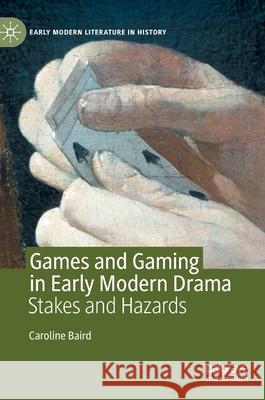Games and Gaming in Early Modern Drama: Stakes and Hazards » książka
topmenu
Games and Gaming in Early Modern Drama: Stakes and Hazards
ISBN-13: 9783030508562 / Angielski / Twarda / 2020 / 290 str.
Games and Gaming in Early Modern Drama: Stakes and Hazards
ISBN-13: 9783030508562 / Angielski / Twarda / 2020 / 290 str.
cena 192,30 zł
(netto: 183,14 VAT: 5%)
Najniższa cena z 30 dni: 191,40 zł
(netto: 183,14 VAT: 5%)
Najniższa cena z 30 dni: 191,40 zł
Termin realizacji zamówienia:
ok. 20 dni roboczych.
ok. 20 dni roboczych.
Darmowa dostawa!
Kategorie:
Kategorie BISAC:
Wydawca:
Palgrave MacMillan
Seria wydawnicza:
Język:
Angielski
ISBN-13:
9783030508562
Rok wydania:
2020
Wydanie:
2020
Numer serii:
000030930
Ilość stron:
290
Waga:
0.54 kg
Wymiary:
21.01 x 14.81 x 2.06
Oprawa:
Twarda
Wolumenów:
01
Dodatkowe informacje:
Wydanie ilustrowane











